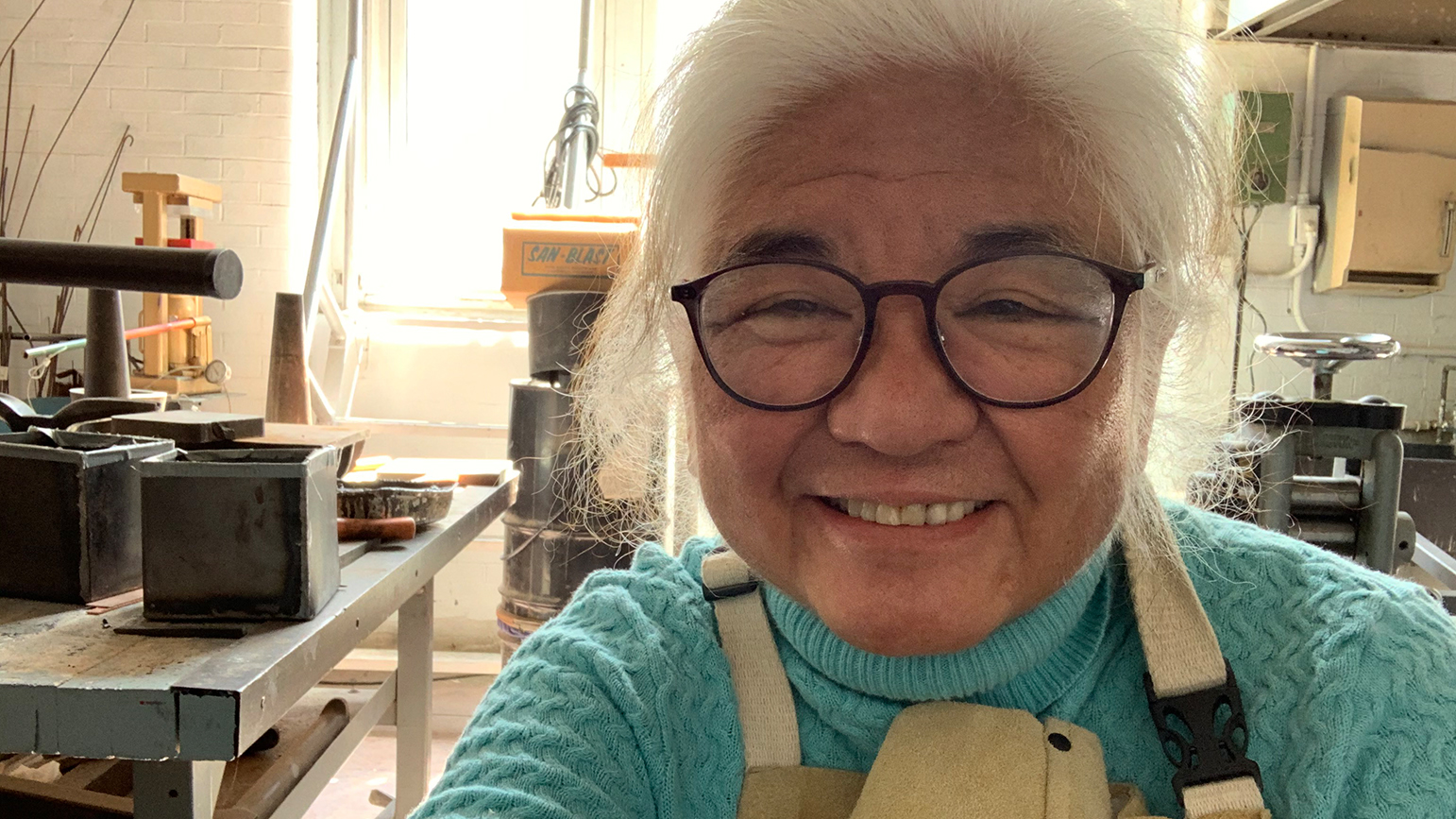
After 42 years of dedication to Carnegie Mellon University’s School of Art, Professor Carol Kumata is retiring at the end of this semester. In both her personal artwork and in her teaching, Carol combines a profound respect for time-honored techniques with a deep understanding of art’s role in illuminating the human condition.
Carol’s time at CMU is marked by an unwavering devotion to teaching. She came to CMU fresh out of graduate school at the University of Wisconsin in 1979 and has been a cornerstone of the sculpture area since her arrival. She has taught a wide variety of courses across the curriculum, including a foundational class for all art and design students when the programs shared first year coursework, an Art in Context class that took students off campus and into the city, summer projects and courses in Germany and Italy, and a wide array of sculpture studios mostly focusing on metals. Her deep knowledge of metalworking, especially within small metals, is unparalleled, and over the years, she has helped students realize ambitious and complex projects. For her commitment to teaching, she received CMU’s Henry Hornbostel Award for Excellence in Teaching.
“As a teacher, I’m really proud of some of the students that come out of CMU,” said Carol. “It was never that important to me to have a commercial career. I was always more focused on what happened in the classroom and watching how students develop their own particular visions.”
Carol, however, is also an accomplished artist outside the classroom. Her work spans the gamut from works you can hold in your hands to installations that command an entire room. Her practice expands from her background in metalsmithing to include mixed-media works that incorporate found objects, flowers, glass and other materials. Her works often use visual and word puns to reflect on the history of objects, as well as to comment on a particular human situation or reality. She has exhibited both locally and nationally, and has been the recipient of numerous awards including fellowships from the National Endowment for the Arts and Pennsylvania Council for the Arts.
“Carol has always devoted her attention to both consummate craft and compelling concept,” said Professor Susanne Slavick. “Her ethos and care clearly influenced her students’ work, as the skills they learned from her always amplified their ideas. You could see this whenever she shared their accomplishments in her impeccably designed exhibits that graced our foyers. Hers is a legacy of successful artists across the country. Never afraid to get her hands dirty—in teaching, making or gardening—she and her students produced elegant, wistful and witty works that could activate an entire gallery, charge a public site, or fit a whole world into your hands.”
“Carol’s dedication to growing young talent is remarkable,” said Head of School Charlie White. “Over more than four decades, her undivided attention to School of Art students has helped develop generations of accomplished artists and creative thinkers. Her deep respect of material and love of object-making is palpable, and we will sorely miss her deep knowledge and passion when she retires at the end of this semester.”
Though Carol will be retiring this fall, one physical reminder of her lasting influence will remain on campus in perpetuity. Students, faculty, staff, and visitors to campus can see bronze casts by Carol on the side of the Purnell Center for the Arts, which were installed when the building was added to CMU’s campus.




